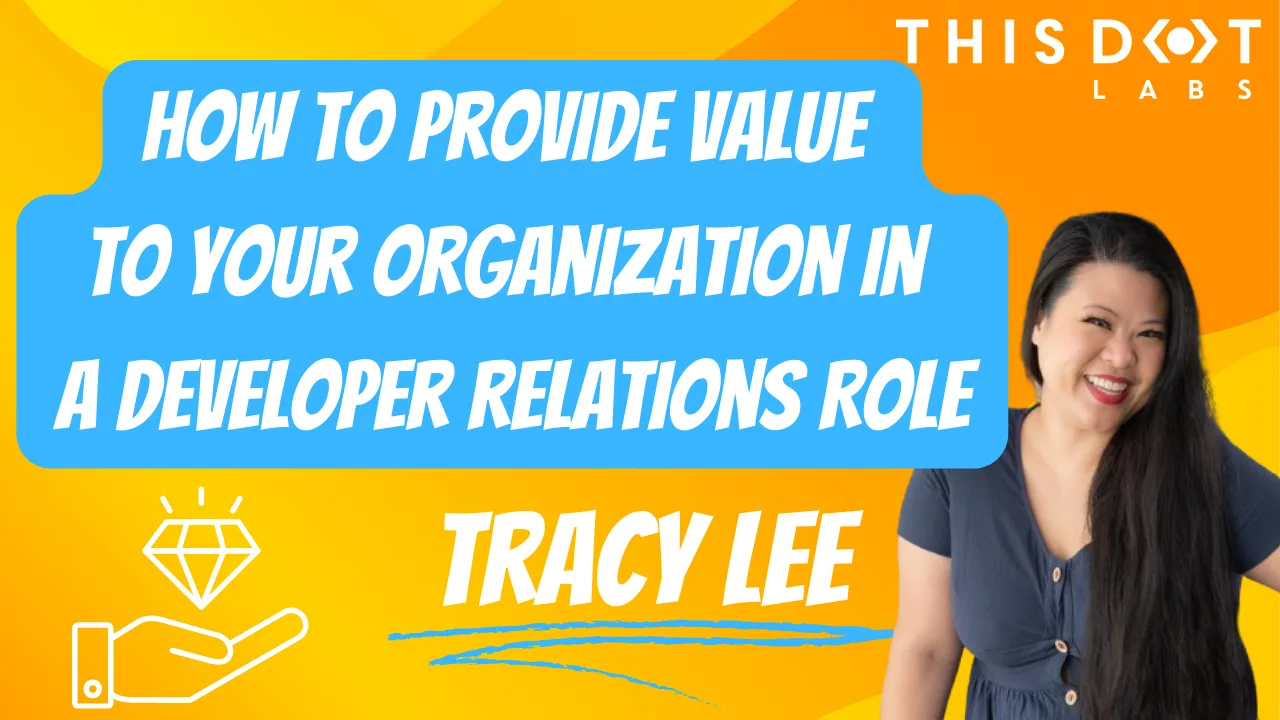A few years ago, a multi-billion dollar corporation we all know and love hired what could be perceived as every developer with Twitter influence on the market into a Developer Relations role. Suddenly, everyone you spoke to worked at the said corporation. While many of us were excited to see the value of Developer Relations recognized by a prominent tech organization, many were also left scratching their heads at the alignment, or lack thereof, between what those hired Developer Relations professionals did to “evangelize or build” and how it related to their employer.
A majority of those DevRel professionals were not even creating value in communities related to that organization’s products. An insider look will tell you that the reason is that those hired were just told to “keep doing what they were doing” and not given any additional direction or focus outside of that. Without clearly defined expectations, DevRel professionals cannot provide value to your organization. This is not sustainable and no one wants this.
Below is a list of four ways that those in developer relations can deliver value to their organizations.
Aligning with your Organization's Goals and Objectives
DevRel professionals recognize that all activities should be tangentially related to providing value to the organization and ensure that these activities contribute to the organization's goals and objectives.
The best way to align DevRel efforts with organizational goals is to make sure you understand what the strategic objectives of your organization are. Is it product awareness? Is it customer satisfaction? Is it revenue growth? Is it pushing new concepts in a market? Is it fostering innovation? Depending on the objective, you will be able to better tailor your DevRel efforts to the organization.
Product Awareness as a Goal
For example, if the current goal of the company is product awareness, Developer Evangelism is the best way to provide value. Twilio is still the canonical example of evangelism done right. In the beginning, Twilio needed to spread awareness of their product, and show developers how easy it was to use.
They did this by showing up at events with developer-centric swag, creating the best tutorials for developers to follow, giving workshops on how to use Twilio APIs, giving talks about how to use Twilio, and creating a strong community of Twilio adopters that shared their use cases around the internet. Through this, the perception was that Twilio was the best solution, and considered the easiest, most obvious tool choice to use when developers were trying to build unique communication features and capabilities like voice, text, chat, video, and email into their applications.
Customer Satisfaction as a Goal
If the organizational goal is customer satisfaction, then Developer Community and Developer Experience are the two areas a DevRel professional should key in on. By building a community and creating customer feedback loops where developers can share struggles, and their issues can be heard and resolved directly by engineers and product in a quick manner, customer satisfaction will increase because you are helping solve the pain points of using the product. Creating a community allows other developers adopting the product to bond and share solutions in an open forum.
Currently, most organizations choose Discord as a way to engage developers and build community. As a DevRel professional, you are in a unique position to help with the Developer Experience in a way that engineers may not be able to. For example, the customer satisfaction metrics may be affected by a lack of documentation, which can easily be solved by improving the documentation where you see the pain points. This does not require engineering or product to get involved and can often solve developer problems overnight. There may be an issue with the migration of one technology to another.
Many Developer Relations professionals have built excellent migration tools to help developers ease this pain. Having the flexibility to work outside of the product roadmap and engineering sprints can serve as an invaluable resource for organizations and serving their needs, and the needs of their users.
Revenue Growth as a Goal
If the goal for your organization is revenue growth, then helping get developers into the top of the sales funnel is key to providing value to your organization. This does not have to be done in a way that compromises the other principle of DevRel or the core value either.
One example I’ll bring up again is Test Automation University by Applitools. By providing a free resource that was able to garner the interest of over 150,000 developers through a DevRel initiative (shout out to Angie Jones for leading this initiative), Applitools was able to collect the email addresses of all these individuals and engage them.
Since our focus is DevRel and contributing to the top of the funnel, I won’t speak to the “right way” sales or marketing should engage these developers, but I will say it is critical for DevRel to educate and advocate for marketing and sales to engage with these developers the right way that does not erode brand trust.
Delivering Value to Your Organization
Delivering value to an organization while upholding the core value of authenticity is not difficult. The hardest part is advocating internally to stakeholders within the organization on the approach to developers and helping them understand the “why” behind the DevRel strategy you are employing.
Balancing authenticity and providing value to both the community and to organizations allows DevRel professionals to thrive and achieve mutual success for both developers and the organizations they support.
Through living these core values and principles, Developer Relations is the way to forge a path of innovation, collaboration, and long-term success in the technology.

